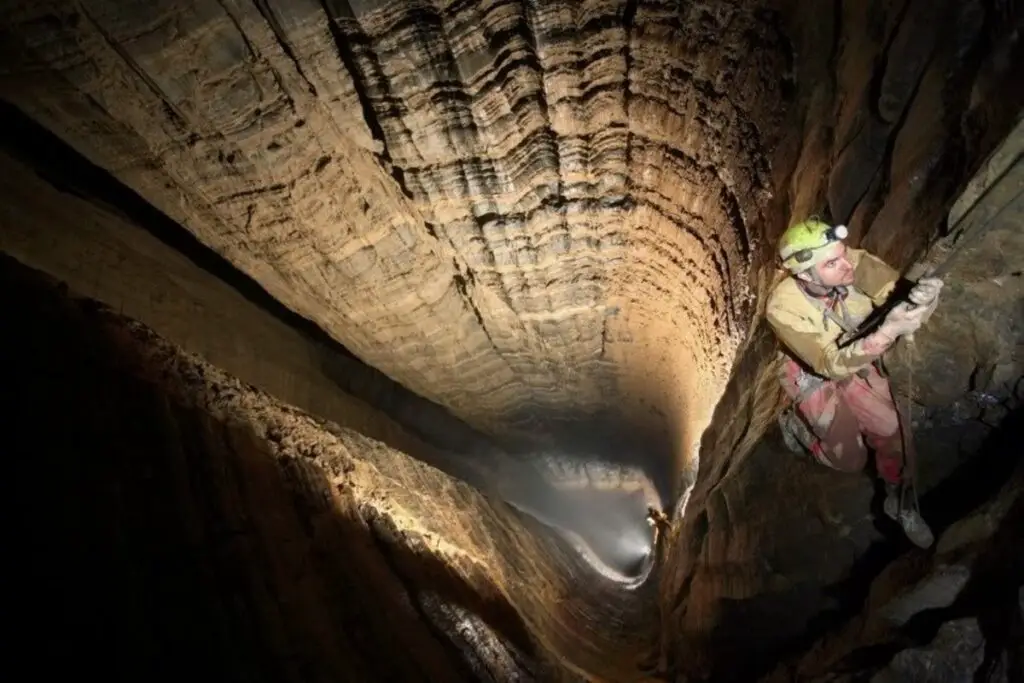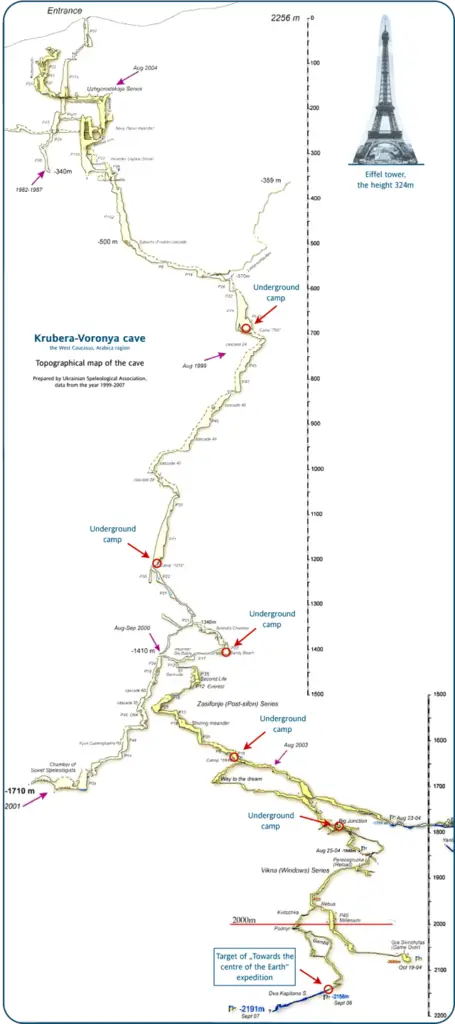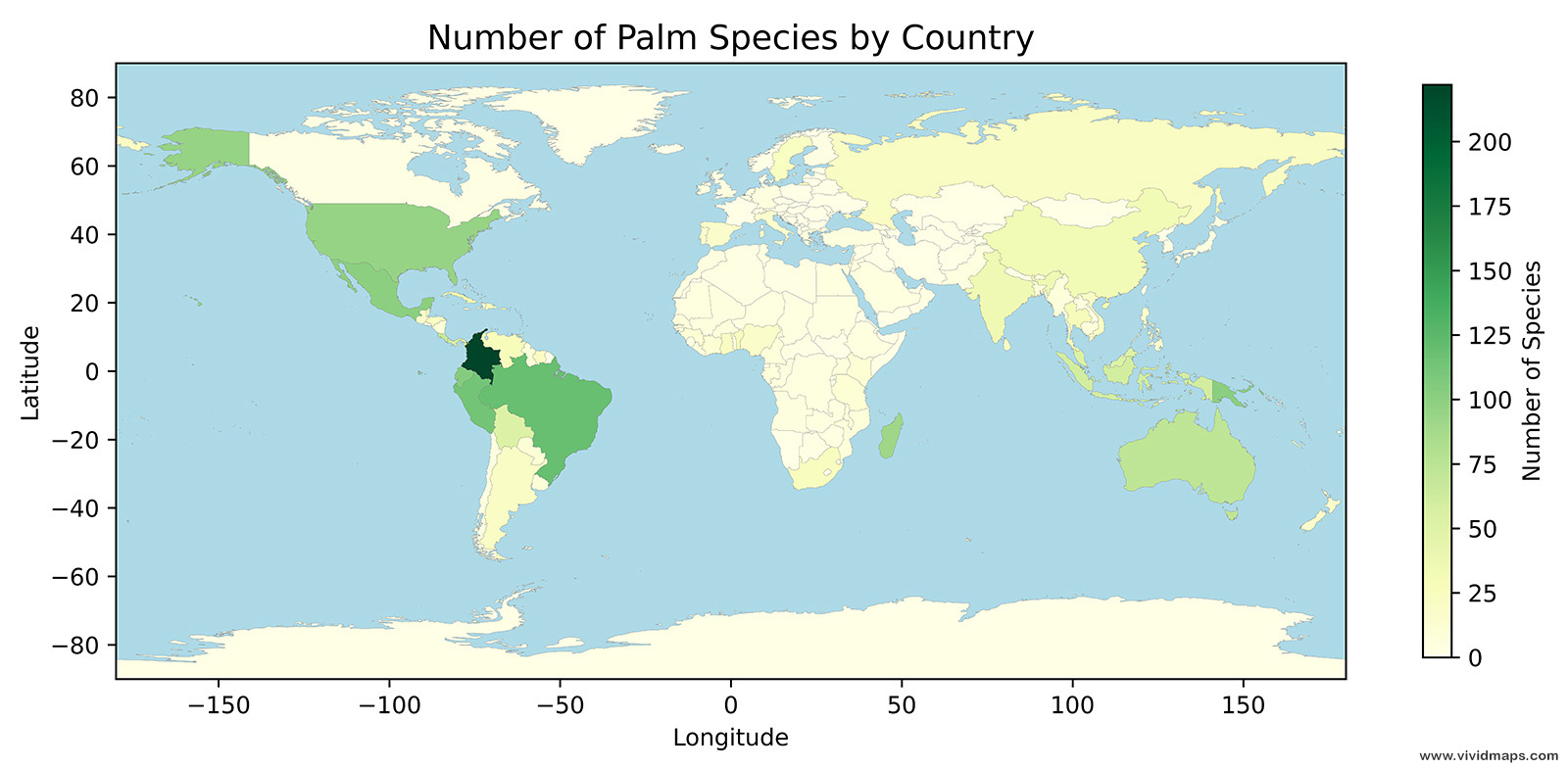Mapping Earth’s Deepest Cave: The Krubera Labyrinth
Hidden within the Arabika Massif of Abkhazia lies a natural wonder that has captivated explorers and scientists alike – the Krubera Cave. Until recently, this subterranean labyrinth held the title of the world’s deepest known cave, plunging an astonishing 2,199 meters (7,215 feet) into the Earth’s crust.
A Vertical Journey Through Time
Discovered in 1960 by Georgian geographers, the cave was named after Alexander Kruber, a pioneering Russian karstologist. However, it wasn’t until the late 1990s and early 2000s that the true extent of Krubera’s depths began to reveal itself.
The cave’s structure is a speleologist’s dream – and nightmare. Imagine a series of vertical shafts, some dropping as much as 152 meters in a single plunge, connected by narrow passages and galleries. The main branch splits at about 200 meters depth, forming two primary routes: the Main Branch and the Nekuybyshevskaya Branch.

Mapping the Abyss
Mapping Krubera is no small feat. The cave’s layout resembles a complex, three-dimensional maze, with over 16 kilometers of explored passages. To put its depth into perspective, if you could stack five Eiffel Towers on top of each other, they still wouldn’t reach the cave’s deepest known point.

The most recent surveys have revealed fascinating details:
- Multiple entrances: In 2014, a second entrance was discovered just 3 meters higher than the main one, at an altitude of about 2,256 meters above sea level.
- Siphons: More than 8 underwater passages (siphons) have been found at depths ranging from 1,400 to 2,144 meters.
- Underground rivers: It’s believed that the cave’s waters resurface through the Reproa and Gega Rivers near Gagra, although this hasn’t been conclusively proven.
A Race to the Bottom
The exploration of Krubera has been a series of record-breaking expeditions. In 2001, it became the first cave to break the 1,700-meter depth barrier. The current record of 2,199 meters was set in 2013 by Ukrainian diver Gennadiy Samokhin, who braved the frigid waters of a terminal siphon to push the limits of human exploration.
While Krubera may have recently lost its title as the world’s deepest cave to the nearby Veryovkina Cave (2,212 meters), it remains an unparalleled natural laboratory for geologists, hydrologists, and biologists. Its twisting passages continue to challenge our understanding of karst systems and underground water flow, making it a crucial site for scientific research.
As mapping technologies advance and brave explorers continue to push deeper, who knows what secrets Krubera may yet reveal? This remarkable cave stands as a testament to the wonders that lie beneath our feet, waiting to be discovered.
Explore Further: Cave Books on Amazon
Dive deeper into the world of caves with these fascinating books:








